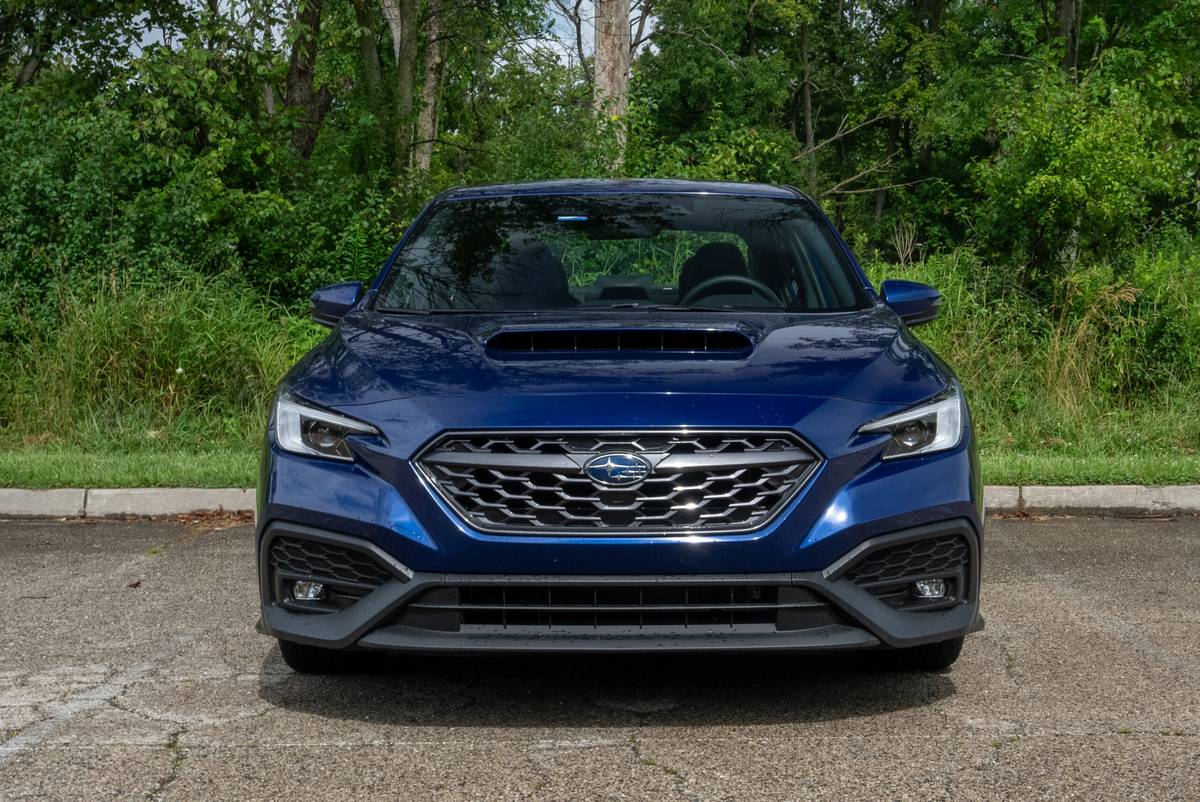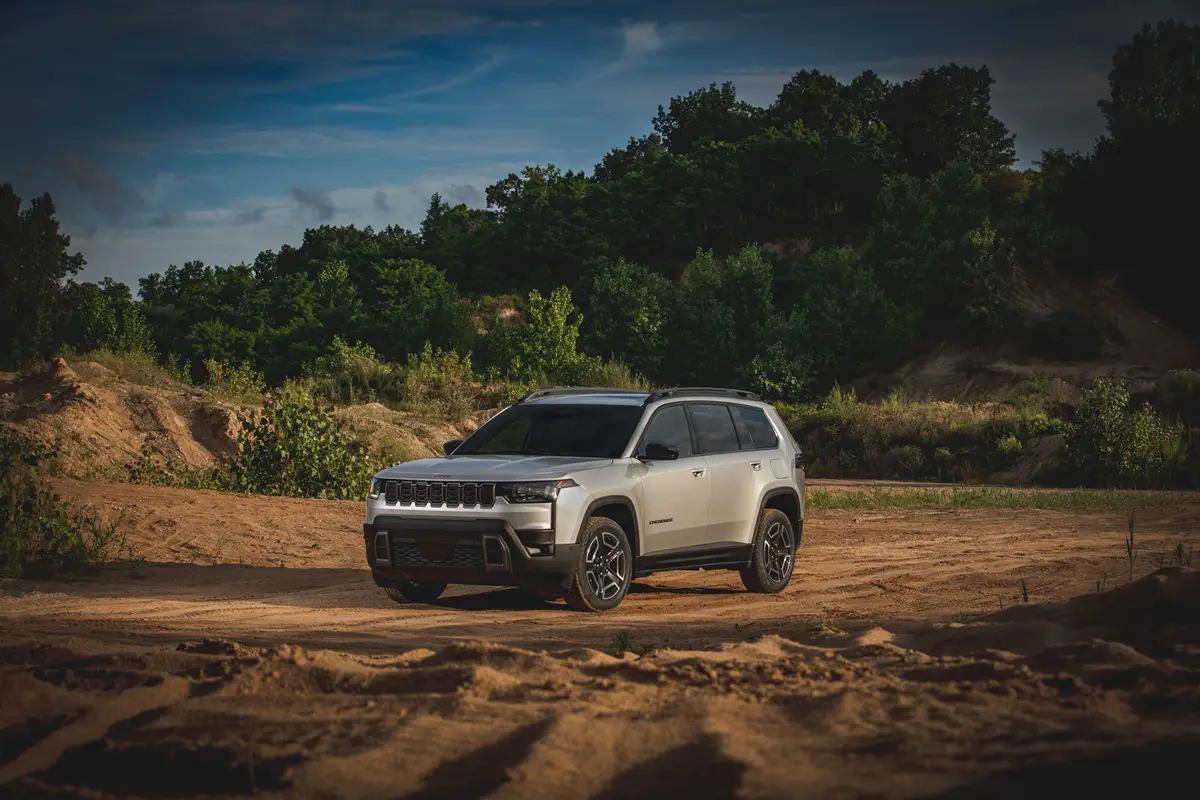Cincinnati.com's view
Toyota may have blown it this time.
Like any auto maker, they want their entry-level cars to be reasonably attractive to both the impecunious and the frugal. That includes first-time-buyer kids on the one hand, mature adults who need a thrifty beater on the other.
In restyling the exterior and interior of their entry car, the Echo, they have not only changed its rather weird-looking exterior into one that invites attention, they’ve also provided an interior that would not be out of place waaay up the price scale.
The danger is that it will cannibalize sales from their more expensive offerings, Corolla and Matrix. Contrariwise, it may also attract buyers who were looking at other makes. But like the naive vendor who priced his goods at less than cost, hoping to make it up on volume, they’ll never get fat on the basic car.
Which is to say, it is a terrific value, well worth a look if you seek basic transport. (By the way, the maker affects an all-caps style for the name. On the ‘net, that’s considered shouting, so I won’t be faithful here.)
There is a long list of options, some of them merely gingerbread, which can run the price up by thousands – if so tempted, consider whether you might not be better off uptown with a Matrix or Corolla if you’re so sybaritic.
When you first see this car, your eye will likely be caught by one of the new metallic or opalescent body finishes – an indulgence totally unexpected in this arena.
As you get in for the test drive, note the relatively low door sill and the relatively high roofline, which makes entry and egress far easier than on many cars a notch up from subcompact. Toyota boasts that this car feels like a compact, and I won’t gainsay it, despite its tidy 93-inch wheelbase.
Next look about and see how skillfully they have used a variety of textures and shades, all nicely integrated within Toyota’s characteristic rounded theme, to make it look as if the interior designers really loved this project.
The only area where the cabin of the tester fell short of my raised expectations was the marking on controls – they looked cheesy, just decaled on. Likewise, the wheel covers scream cheapo.
To keep costs down, Toyota kept it simple. There is but one series of Echo, configured either as a coupe or sedan. The only other fork in the road lies in choice of transmission: five-speed manual or four-speed automatic.
The cheapest rendition is the two-door coupe with manual transmission – $10,590 with freight. The four-door is $590 more – money well spent, in my view. The rear seats of a subcompact coupe are generally cruel and unusual for adults – this car being no exception to the rule – and it’s a drag to lay down the front seats to corral even people-in-the-making back there.
The car I was lent was a sedan with automatic transmission and a raft of options that generally would be included just a little bit upstream. To wit : air conditioning, $925; a stereo upgrade, $140; dual manual remote outside mirrors, $70; upsized tires and wheels, $90; power door locks, $275; power steering, $270, and carpeted floor mats, $87. That put it a bit over 14 grand, freight included. That seems like a reasonable equipment load to me, although I lived a long time without power door locks, and manual remote mirrors are only slightly more useful than the unassisted sort. In the Cincinnati climate, air conditioning is more necessity than luxury, even in winter, when its dehumidification is appreciated.
The car is light enough – just over a ton – that you might squeak by without power steering, but it would make the car far less appealing for resale.
I often advocate getting five-speed manual transmissions in low-end cars, because they often need that extra gear to feel peppy, and cannot take the parasitic losses inherent in an automatic. What’s more, they can be fun to stir, too.
The Echo runs corner to this line of thought. For one thing, they could stuff a 10-speed transmission into this car and it still wouldn’t be fun to drive. That’s not its mission. And the feisty engine mates well with the automatic transmission, a tribute to both its output and the engineers’ careful spacing of the gear ratios.
The power source is a 1.5-liter 16-valver, aluminum top and bottom. It has a surprisingly high 10.5:1 compression ratio, and pours out 108 hp at 6,000 rpm and 105 foot-pounds of torque at 4,200.
Lofty as those peaks seem, they don’t prevent the Echo from feeling peppy as it climbs through the gears, nor do they make it seem to fall off the curve when changing up. There’s no tachometer, but the transmission seemed willing to let the engine run out to its maximum power point with relatively little accelerator pressure.
With a differential ratio of 3.85:1, there was a satisfying amount of engine braking even in top gear, which is a 70 percent overdrive. There was quite a bit more when overdrive was canceled via the switch on the side of the floor-mounted shifter. That’s a plus, which is a counterweight to the lack of a gear-selected indicator amid the instruments.
Instruments? Yeah, all two of them, speedometer and fuel level. There is a bevy of warning lights, including a blue one that advises the driver to take it easy when the engine is cold. The Echo has a fairly good ride – actually quite good for the class – as long as the road is reasonable. The suspension felt a trifle overworked when traversing some nasty paved surfaces a bit faster than prudence would dictate.
Noise level at freeway speeds even over rough concrete was moderate, mostly tire noise, which perhaps seemed obtrusive because the exceptionally low coefficient of drag (0.29) allowed air to glide smoothly over the car.
Handling was fine, within the boundaries of common sense. I wouldn’t think a second about trading up to the 15-inch wheels. for the increased traction and stability. Other options that might be appealing include antilock brakes ($340); keyless entry, $175, and side air bags, $250.
This lattermost is highly desirable in this weight class, I think, especially since the Echo earned only a three-star rating on the government’s side-impact tests. For frontal impacts, it was given four stars on their five-star scale. This is pretty typical in the weight class – there’s just not enough metal to provide the kind of protection expected in heavier vehicles. The insurance industry’s crashers have not yet published results for the little fella. Because the tester had only a few miles on it, I did not subject it to the usual 70-mph panic-stop braking tests. In ordinary circumstances, the brake pedal felt a bit numb, but stops were within my comfort range.
The upgraded stereo (it goes from four speakers to six and picks up a CD player in additio n to its AM-FM capabilities) was impressive for this segment. The tuners had above-average sensitivity, and the music was clear and transparent, although a bit wimpy in the bass and somewhat lacking in presence. The mall-crawl crowd will want to add a few thousand watts and rip out the rear seat for a subwoofer.
As equipped, the tester was priced at $14,112 with freight. Edmunds.com says they’re going for sticker, being so new and newly appealing. At that price, payments would come to $286 a month, assuming 20 percent down, 10 percent interest and 48 installments.
Latest news



